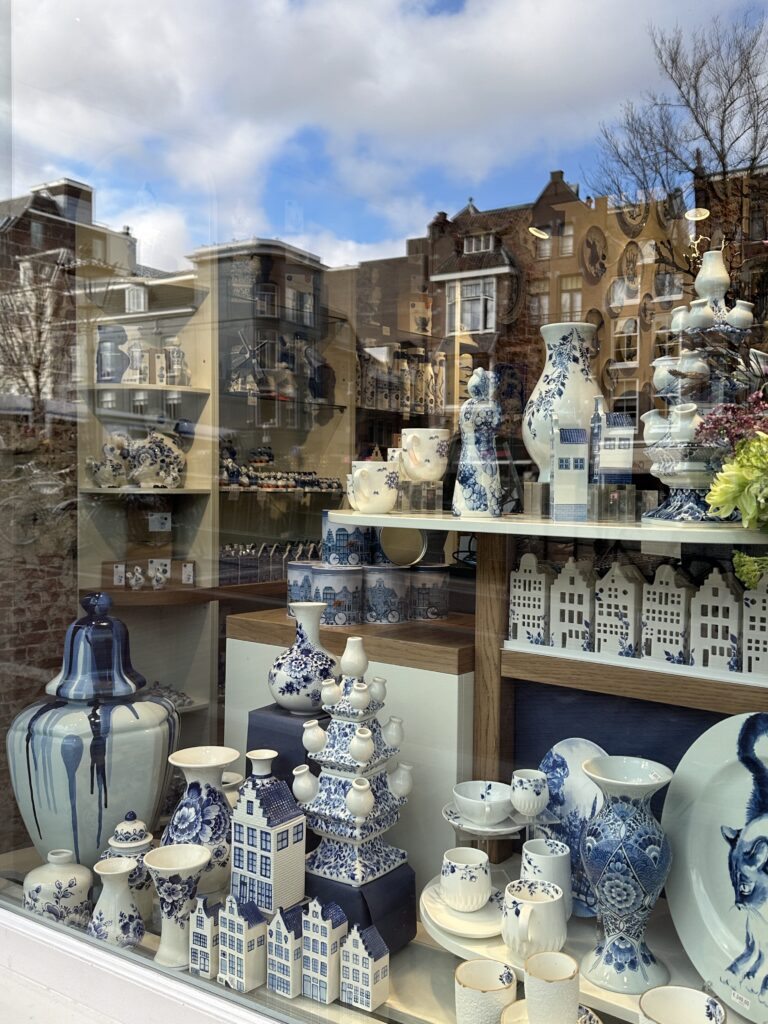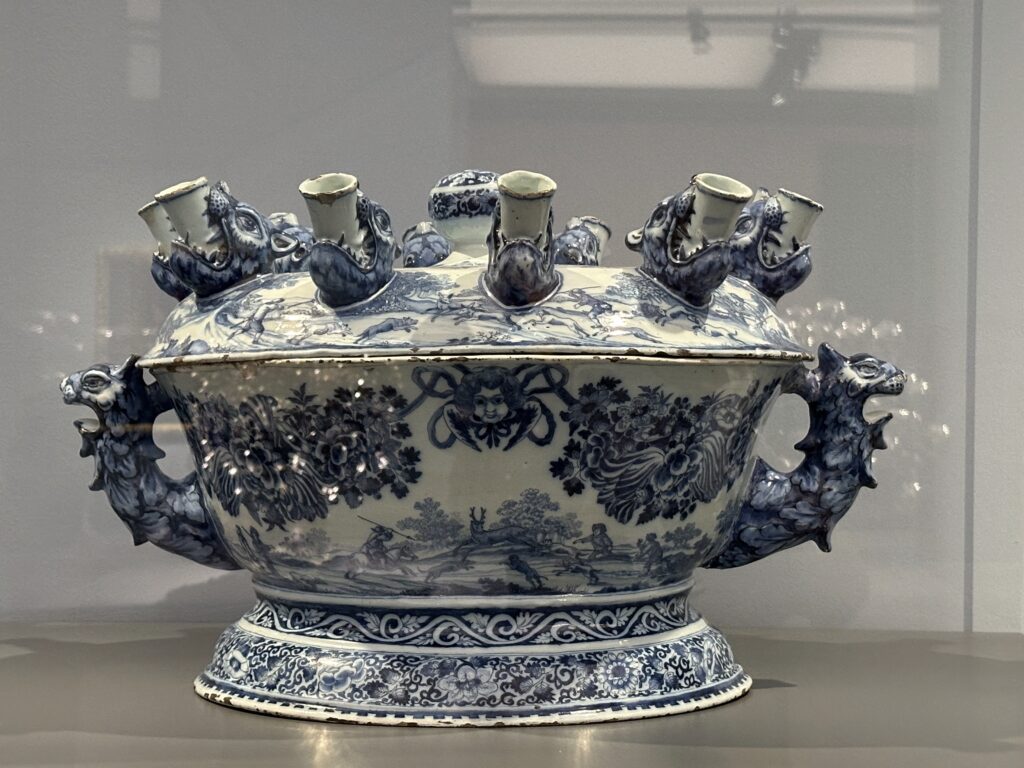10 November 2024
It is four on a cold winter morning as I sit alone with my thoughts. The world outside is still asleep, but my mind is racing with vivid memories of my recent visit to Meissen.
The stillness of the early morning provides the perfect backdrop for reflection. I ask myself, what is it about porcelain that so captivates me? It seems the only way to quiet the internal chaos is to put pen to paper. With a cup of tea, I begin writing this porcelain blog.
My memory drifts back to my early twenties, during my second journey through Europe, when I first encountered porcelain and ceramic beyond the familiar landscapes of China.
In Amsterdam, almost by chance, I found myself drawn to blue-and-white ceramic clogs and mugs-seemingly simple souvenirs that would become my first unexpected lesson in cultural dialogue. As I stood in the shop, it was a sea of blue and white landscape stretching across shelves and display cases, a sense of familiarity seized me. Weren’t these pieces eerily similar to the ceramics adorning homes and restaurants across China? I was puzzled: Why were the Dutch selling objects that appeared so quintessentially Chinese, yet bore a subtle, unmistakable Dutch essence?

Heinen Delfts Blauw in Amsterdam (Photo private)
It was only much later that I would learn these were not mere imitations, but exquisite examples of Dutch Delftware, a revelation that would transform my understanding of ceramic art’s complex and interconnected history.

De Grieksche A by Adriaen Kocks, Large Flower Holder (1686-1701) Faience, painted in cobalt blue, opaque tin glaze, Museum für Kunst und Gewerbe Hamburg (photo private)
A recent visit to the exhibition Flowers Forever: Blumen in Kunst und Kultur at the Bucerius Kunst Forum in Hamburg reconnects me with that pivotal moment of my first Delftware encounter.
Now, through the trained eyes of an art historian, I examine these ceramic pieces with a depth of understanding and uncover the silent narratives embedded in each blue-and-white brushstroke.
Faience is best known as Delftware, a type of faience produced in Delft, Netherlands, from the seventeenth to the nineteenth centuries. Faience itself is a type of earthenware coated with a white tin glaze and then decorated with metal oxides. Cobalt oxide is a key ingredient, producing the vibrant blue color often seen in both faience and porcelain. When fired at high temperatures, it reacts with the glaze to create the distinctive blue pigment.
Faience tulip vases were highly popular during the Dutch Golden Age. This unique vessel features multiple openings, allowing for the display of a variety of tulips within a single vase. The spouts are carefully designed to showcase each individual flower in its full splendor.
This faience vase is an example of Dutch Kraak porselein which was produced in the seventeenth century to imitate Chinese porcelain. Each painted flower, each pattern tells a story far beyond its decorative surface—a narrative of the complex cultural and economic exchanges of the early modern global maritime world.
Inspired by the imported Chinese Kraak porcelains, Dutch faience emerged as a more affordable alternative. While employing local clays instead of the high-quality kaolin used in Chinese porcelain, which resulted in a less translucent quality, faience offered a viable option for those who could not afford the luxury of genuine Chinese imports.
By democratizing access to porcelain within the Netherlands, faience allowed a wider range of society to enjoy the aesthetic appeal of these coveted ceramics.
This Delftware serves as a prime example of how the Dutch not only imitated but also reimagined these porcelain traditions, ultimately developing their own unique and distinctive porcelain culture.